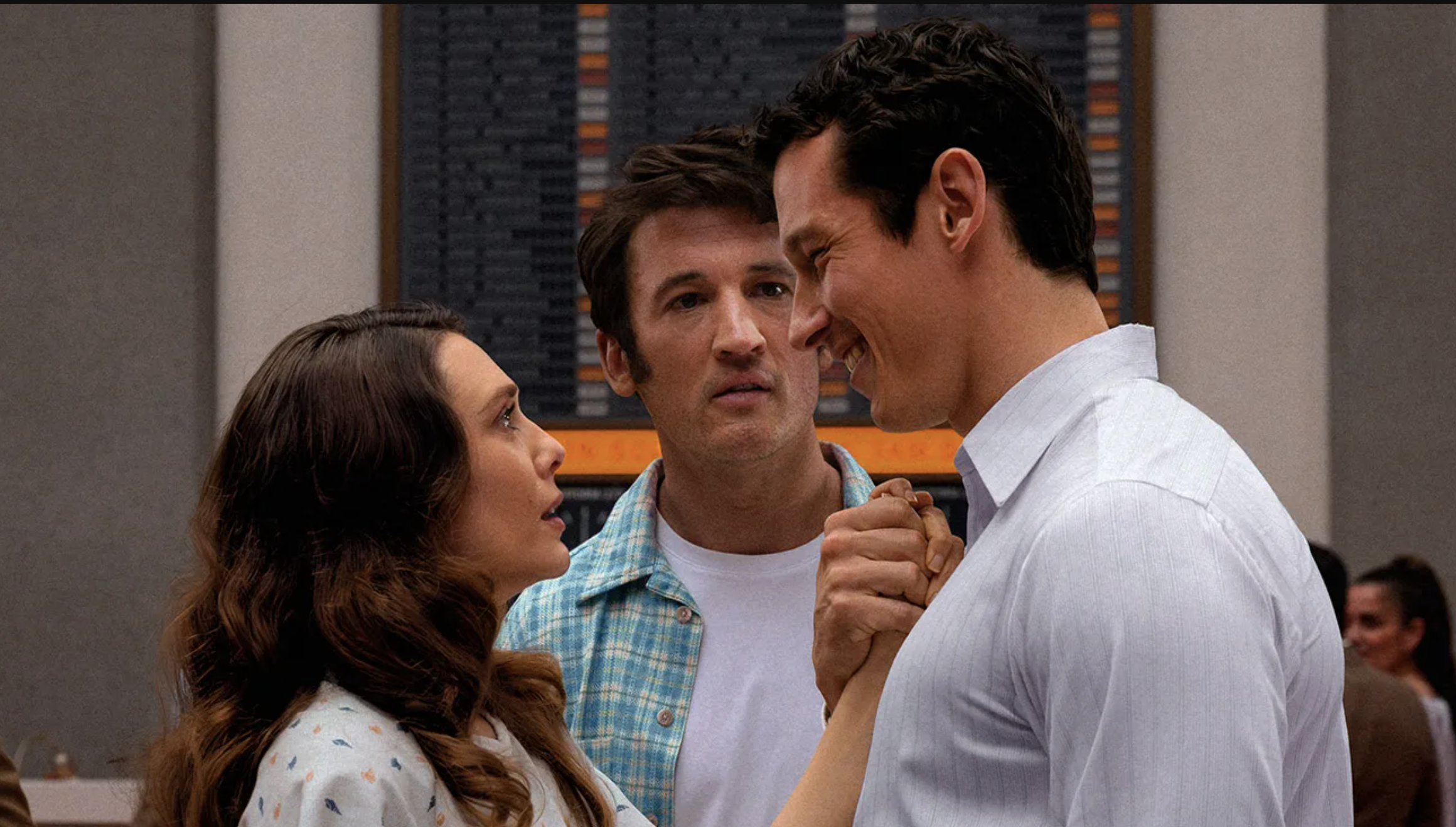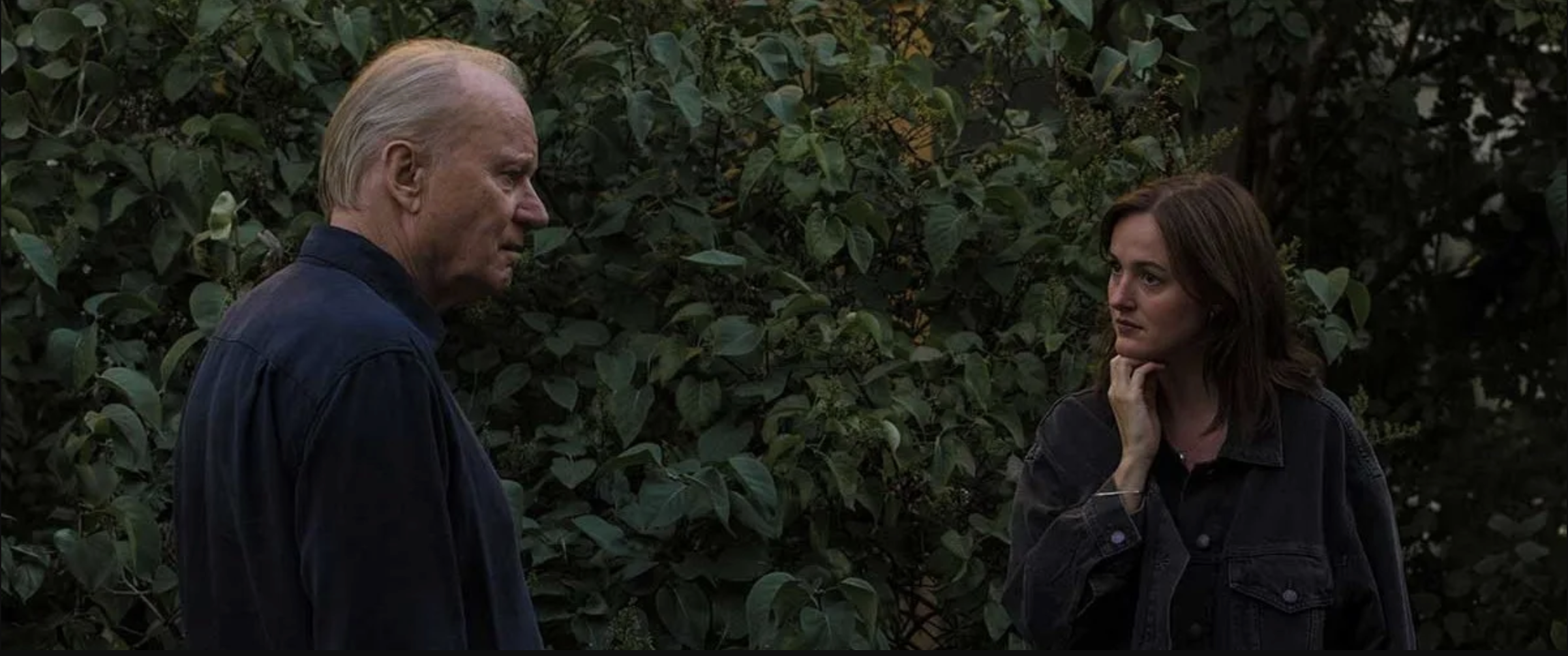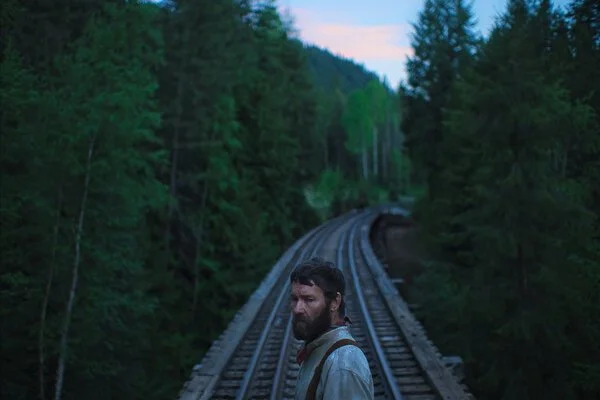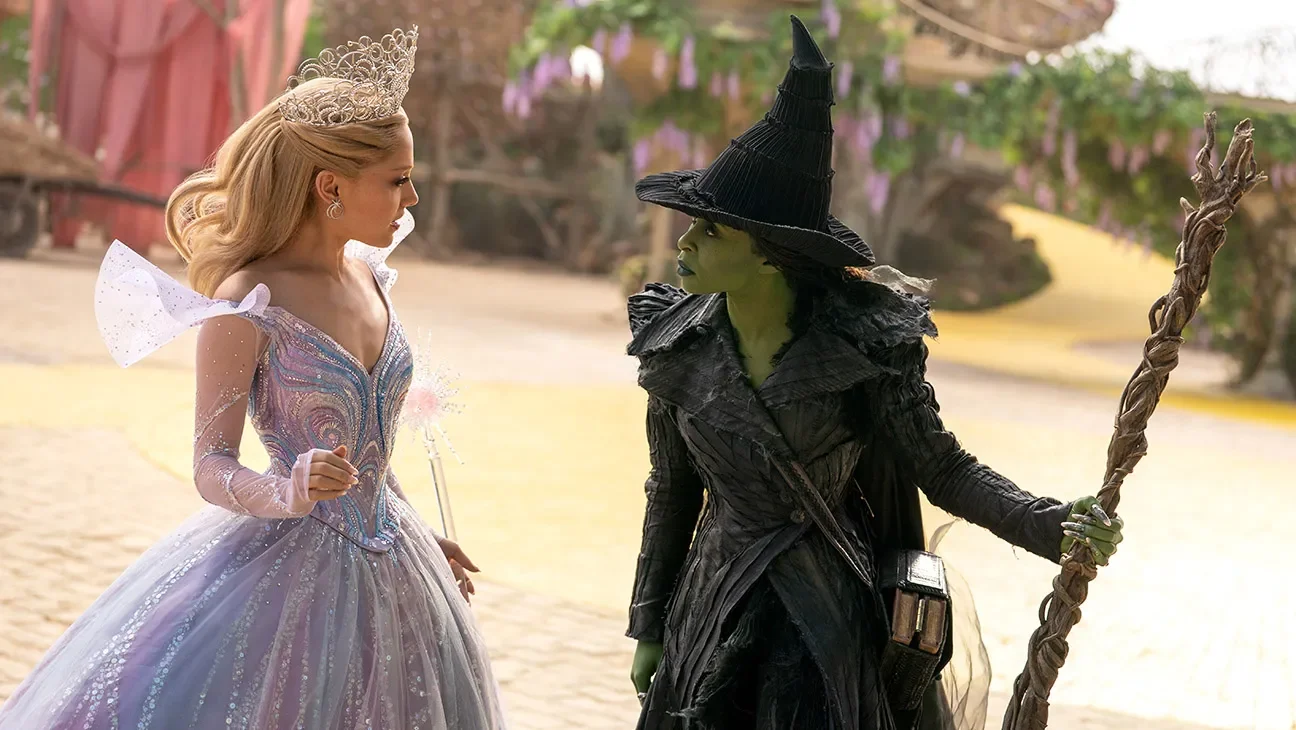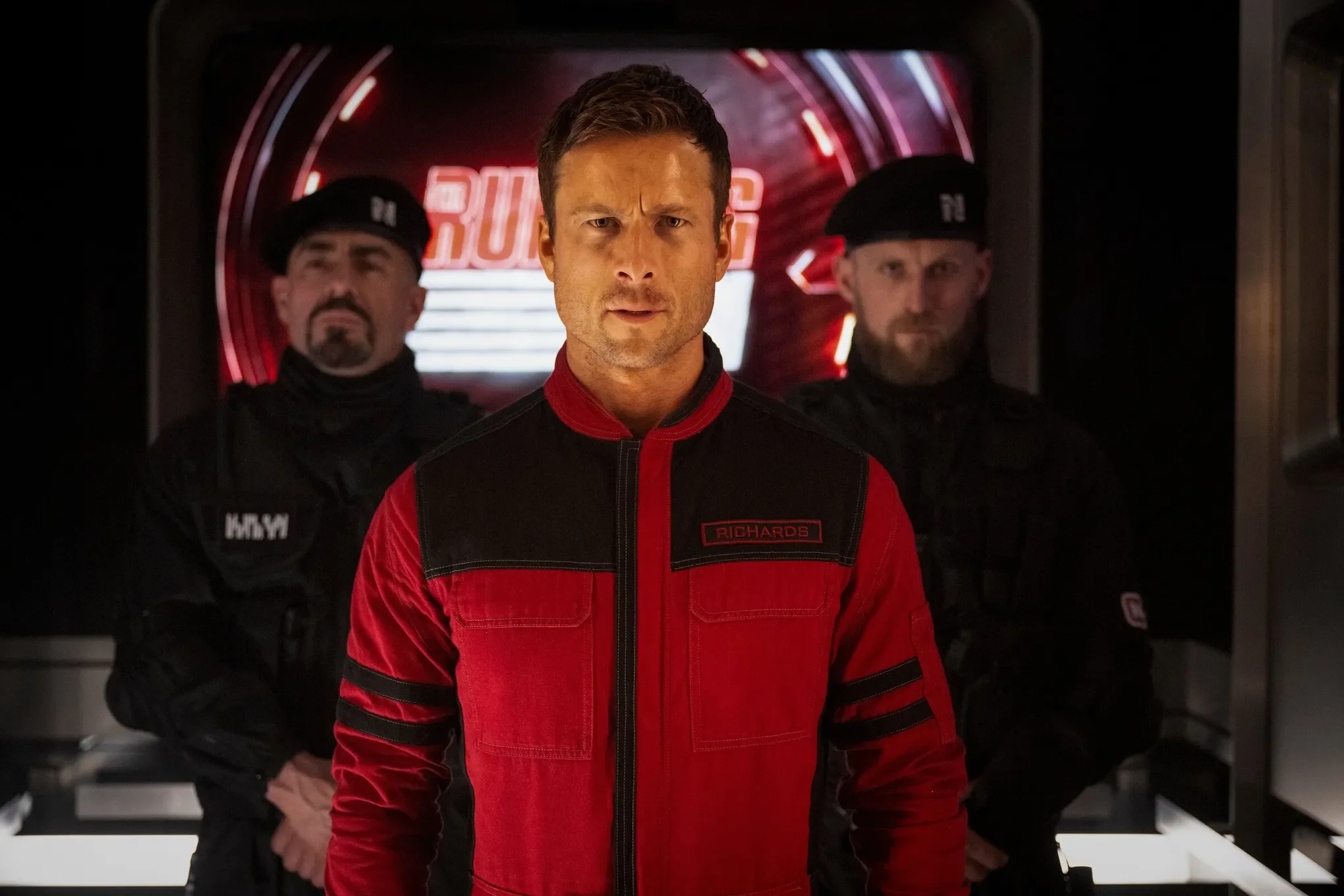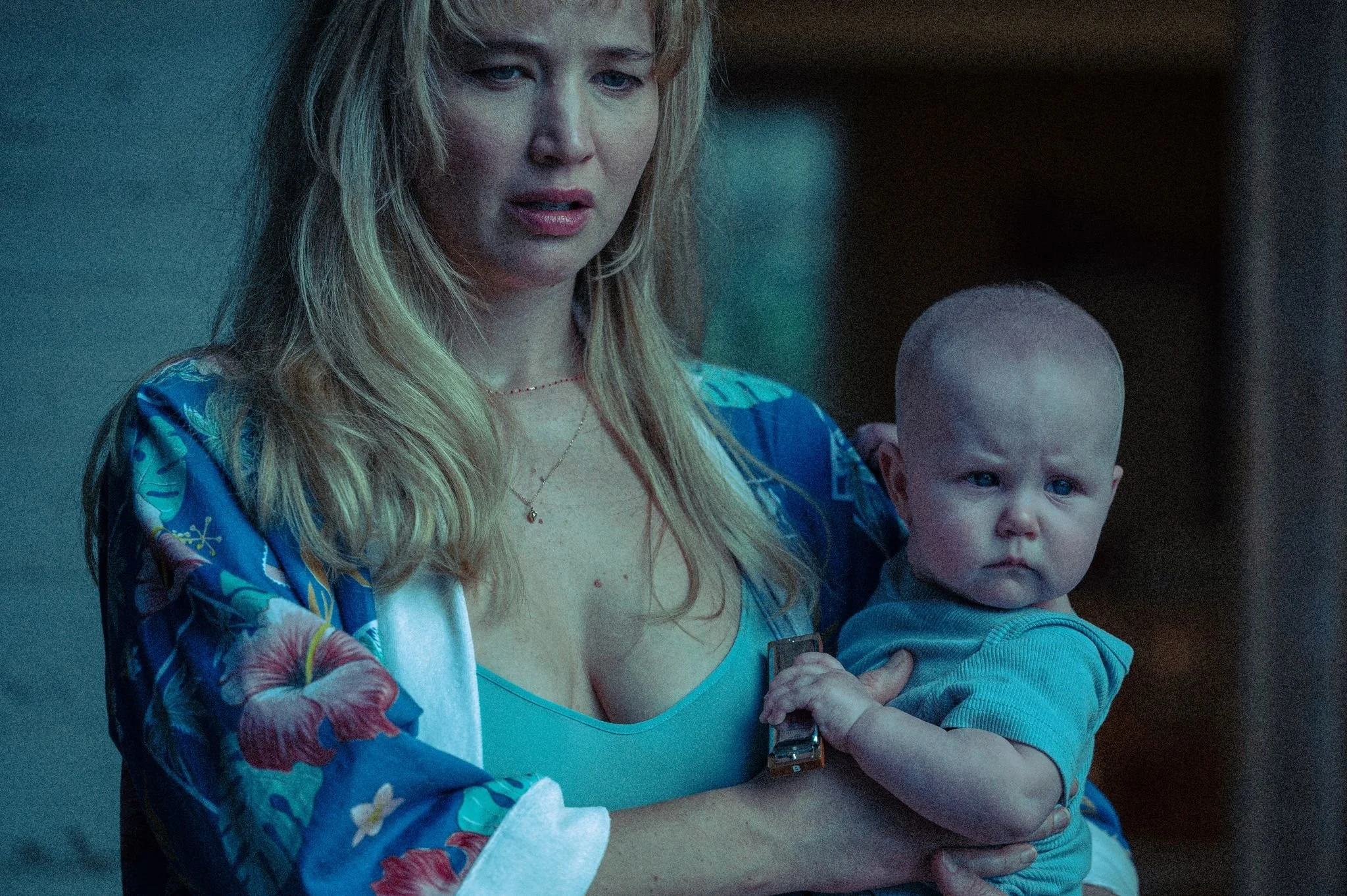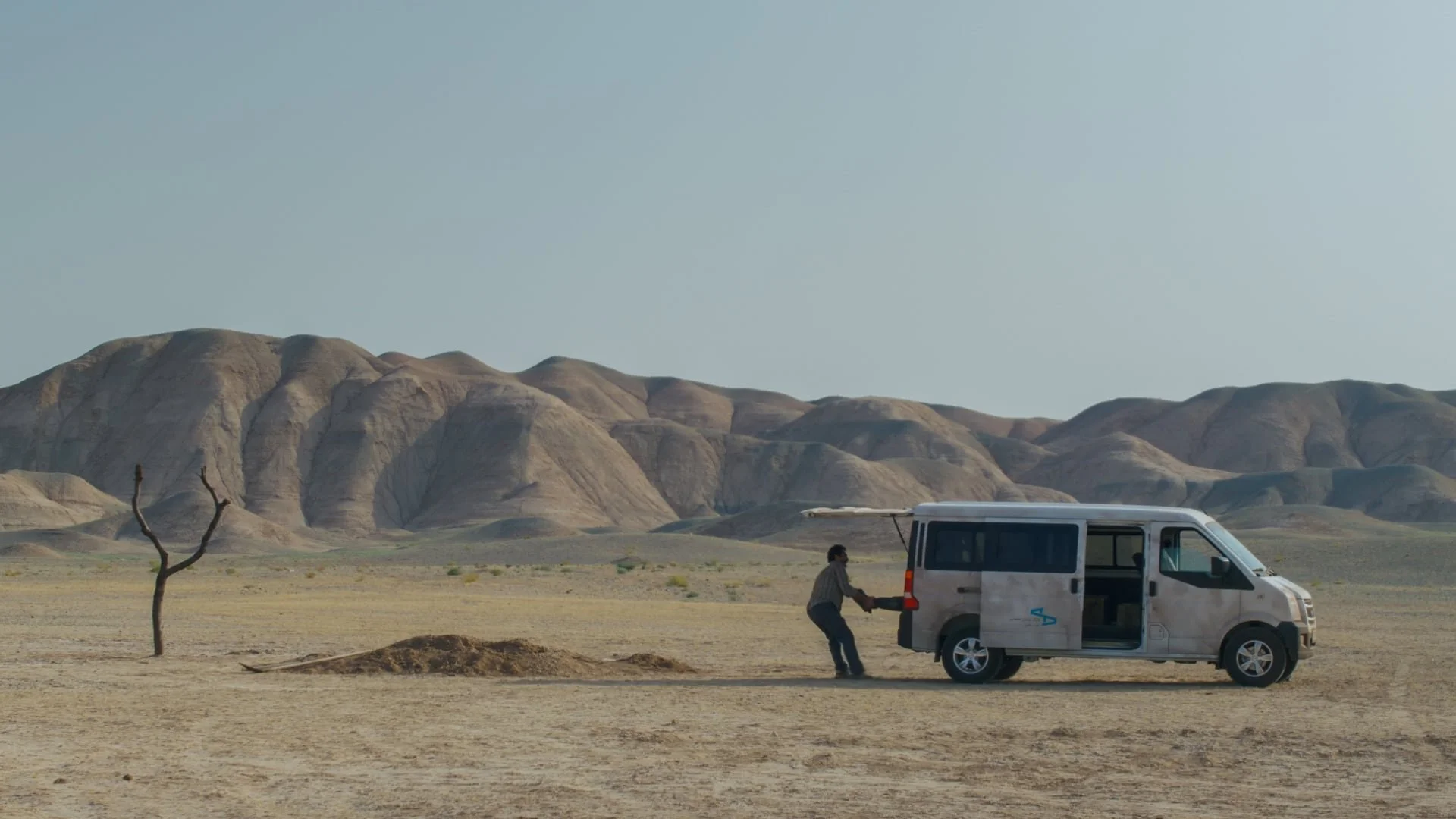ETERNITY
Directing: B
Acting: B+
Writing: B
Cinematography: B
Editing: B+
I really enjoyed Eternity, but I also have a lot of nitpicks. Let’s go through them all!
But let’s back up a step, to the premise, which is that our three main characters spend time in a place called “Junction,” where they have as long as a week to decide a single environment (or world, or universe, whatever you want to call it) in which to spend eternity. The twist, and the whole reason for this story, is that Joan (Elizabeth Olsen) is also faced with another agonizing decision: whether to spend eternity with the first husband, Luke (Callum Turmer), who died in the Korean war, or her second husband, Larry (Miles Teller), with whom Joan enjoyed 65 years of happy marriage.
The first death we see is Larry’s, and it’s the circumstances of this death that is my first major nitpick. It happens at a gender reveal party for one of their great grandchildren. A gender reveal party? Really? To be fair, the script, by Patrick Cunnane and director David Freyne, passingly acknowledges how stupid these parties are: “People die at these things!” says Larry as an old man, played by Barry Primus (Joan as an old woman is played by Betty Buckley). There is even a bit of a callback to this gag when a later couple met in Junction is revealed to have been killed in a freak accident at a gender reveal party. Still, the deliberately inoffensive jokes aside, the use of a gender reveal party in the opening sequence of this film both reflects and participates in the preposterous normalization of "gender reveal” parties. These things are both pointless and blithely presumptuous, and might as well be called “Genital Identification Parties.” But nobody in this movie dares say that.
We learn on the car ride to the party, before Larry dies, that Joan has cancer, and is waiting until after the party to tell the rest of the family. When Larry wakes up in Junction, he’s the first character we follow there, and at first the story is just from his perspective. But, we already know that Joan is not far behind, and basically the second act involves a shift in perspective to hers. Not long after that, we learn that Luke has been waiting for Joan in Junction for the past 67 years.
The rules of how things work in Junction are both undeniably entertaining and often nonsensical. This film clearly owes its existence to the widely loved (I always thought it was just fine) 1991 Albert Brooks film Defending Your Life, except instead of a character pleading his case for having lived a life worthy of spending eternity in a better place, here characters merely have to choose where to spend eternity—and in this case, with whom.
Why time means anything in Junction at all escapes me, but it very much does: “clients” are assigned an Afterlife Coordinator (“AC”) as a guide to help them choose, but they get one week in which to do it. The people who work these jobs in Junction, whether they are ACs or janitors or bartenders, are people who have chosen, for various reasons, not to go to any eternity at all. Some of them just enjoy helping others and that gives them a feeling of purpose. Some are waiting for their beloved to arrive, as in Luke, who has waited there for 67 years. It’s a little weird that measurements of time should be so important in Junction when it means nothing in eternity, but whatever.
The thing is, in the film Eternity, it’s all the scenes that take place in Junction that are really fun and compelling—and, crucially, contains all of the surprisingly effective humor in this film. Now, it also makes no sense that the system here should be so modeled on capitalism, with representatives from countless “Worlds” trying to sell it to people passing through Junction—not with money, but just simple persuasion, I guess. We see characters walking past countless booths (or in some cases, watching commercials) for different “Worlds,” from Paris Land to Smokers World to 1920s Germany “with 100% less Nazis.” Larry’s inclination is toward Beach World, and Joan’s is toward Mountain Town—basically the same argument they had in the car on the way to the party. I loved seeing all these examples of eternities, and when I saw booths for Queer World and Studio 54 World side by side, I thought: I’d have a hard time choosing between those two. That said, why does this system only have a selection of offerings created by someone else? Can’t we just create one of our own? What if I want to spend eternity in Andrew-Garfield-and-Timothée-Chalamet-Sandwich World?
Junction is also made much more fun by the supporting characters who are Larry’s and Joan’s ACs, respectively: Anna (Da’Vine Joy Randolph) and Ryan (John Early). These two are very invested in their clients but also have a sexual past together, which is an odd turn in this film given how openly and obviously queer John Early is. He does marvel at the handsomeness of Luke, a running gag in the script, but he later explains to Anna that he could never do polyamory because “I am a one-woman man.” Oh really, John Early? The oddest thing about that exchange is that it is the one time in Eternity that polyamory is brought up, and it’s only within the context of Ryan and Anna’s relationship. Why does no one ever bring up the idea to Joan, Larry and Luke? Couldn’t they at least test out Polyamory World?
It seems like that’s the only thing that could be a suitable compromise for all three of them. Why should Joan have to choose? Isn’t eternity supposed to be the place they choose in which they’ll be happiest? This script does, amusingly, acknowledge how one eternity could quickly get tedious: enforcement officials are constantly running down people trying to escape the eternity they have chosen, one of whom shouts, “Museum World is so boring!” But would not any eternity be so? Whether it’s an eternity at the beach or in the mountains?
Indeed, there’s a ton of detail in Eternity that is really easy to pick apart, not least of which is the fair amount of time spent in different eternities in the second half of the film. These scenes are constructed so that characters can reflect on whether or not they made the right choice, but when the backdrop is just serene mountains or an inexplicably overcrowded beach (why would there be a limit on the amount of beach that can be shared for eternity?), Eternity, as a film, instantly just becomes far less interesting, compelling, or fun. It’s less fun without Early or Randolph around. And the technique for rendering the “Archive” building in each Eternity where characters can view replayed memories from their lives is mystifying: they see themselves as tangible people, but in a sort of diorama box with the environment of these memories rendered in large hand drawn backdrops. I can’t tell if this was a legitimately artistic choice or if it was a production cost saving measure. It sure felt like the latter,
Eternity is the kind of movie that is undeniably entertaining but also does not stand up to even the slightest bit of scrutiny. I laughed a lot the entire time the film was set at Junction, from the many sight gags to the delightful performances of both Da’Vine Joy Randolph and John Early. This made me happy to have seen this movie even though none of it really makes any sense.
Overall: B

